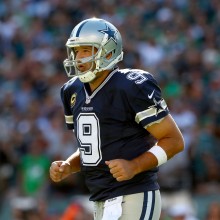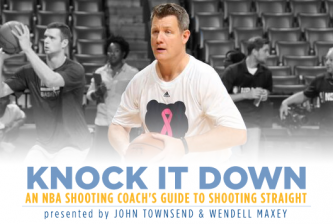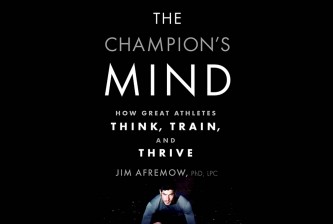As a shooting coach, the language I use when working with players is an extremely important part of my coaching philosophy and as teaching tools.
This vocabulary is the same regardless if I am working with youth players, college athletes, or NBA pros and is intended to match visually what the technique is I’m trying to teach a player as a shooting coach.
I try to use words that when you hear them, you can picture them in your minds-eye and know exactly what I am talking about.
“My Shooting Coach Vocabulary” are as follows…
Feet Match The Elbow
In the previous “Knock It Down” post — The Top 4 Players Who I’ve Learned The Most From As An NBA Shooting Coach – I shared the story about how I learned about a players’ “feet matching their elbow” by watching NBA guard Steve Blake shoot and having extensive talks with Dean Demopoulos — who was an assistant coach on Nate McMillan’s staff at the time during my time with the Portland Trail Blazers. I took that point of view and applied it to my coaching: I observed and watched shooters and a large number of players turn their feet when they shoot. Not only are they trying to get their feet to match their elbow, but they’re also putting their body in position to follow the basketball.
Pattern Shooting
In that same post, Sergio Rodriguez deserves partial credit with my use of the term “pattern shooting”. During the offseason and my two weeks in Spain working out with Sergio, we established certain patterns on the court – patterns of movement, patterns of shooting and worked within that concept during our workout and shooting sessions. Depending on the player and what you are trying to accomplish, the pattern on the floor will change. What is important, is that if you are working with one player that you stay dedicated to the pattern to not only build physical repetition, but also a mental pattern of training as well.
Alignment And Form Shooting
This is wording and phrases that I have applied and used with players this season, but have been around for years. Form shooting is when you are standing in front of the hoop and rim and lifting the ball up working on your form. During this exercise, you are focusing on certain “performance cues”. With “alignment shooting”, I apply when using a straight arm to shoot because you align your shot as opposed to working on your form. A player is still working on their motion, but now it’s about perfecting a straight motion.
Performance Cue (7 total cues)
The term “performance cue” is used a lot in Sports Psychology and helps a player remember a certain focal point mentally so they know exactly what I am referring to and what their body should be doing. With these performance cues, it’s important that you keep them to two or less (at a time) when working with one player on areas of focus. If a player is thinking about more than one or two focal points, they can be thrown off by overthinking.
1 – Straight Arm
Lets say you are shooting a free throw and are a right handed shooter, then I want your arm to be straight and level, protruding out and perpendicular with your body. I don’t want your arm to be in. I want it to be straight. And you can use your right hip as the level point as to where your arm should be straight. You don’t want movement to the inside of your body or the outside of your body.
2 – Outside Your Body
With that arm straight, the next is to ensure it is kept “outside of your body”. I use the visual imagery of a train on a track. The train is inside of the track. But the wheels and the motion of the wheels are on the outside and that is where a shooter’s arms should be, and straight. So all of the steps that follow, then need to be outside of the body. If the ball goes inside the body, then the body starts to shift. Basically, everything you do motion wise is because your body follows the ball.
3 – Beside Your Head
With your arm straight and outside of your body, the next motion is after lifting the ball you’ll bring it beside your head. Basically, you have two types of shooters: Some players are going to lift the ball beside their head, while other players are going to lift the ball to the top of their head, so you will need to make adjustments depending on the type of shooter you are. In a perfect world, if you are a coach working with young players and trying to develop them they are going to want to be beside their head after lifting the ball. If you start bringing the ball to your face or the middle of your face, that is when your shooting elbow pops out, you start experiencing issues with the “staightness” of your shot, your left hand starts being involved in your shot and there is no consistency with your shot. In the end, that form is hard to repeat if the ball is not beside your head.
4 – Top Of Your Head
The first three performance cues are great to apply when you are trying to develop a player into a shooter. This fourth performance cue is more for older players who are set in their ways and aren’t inclined to make the adjustment. This form is where the player will lift the ball up to their forehead or higher, so they can clear their head and extend the arm.
5 – Lift
Lift is where you start the basketball compared to where you finish toward the basket. If you are a young kid, some may have a hard time lifting the ball to the side of their head. But if you start training players at a young age to stand to the left of the basket — as opposed to standing in the middle of the basket where the basketball is in the middle of their body — they can line their shooting arm up with hoop and get more lift on the ball.
6 – Extension
I never use the term “follow through”. That is too generic of a term. Follow through can mean different things to different people. Follow through with your arm? Follow through with your wrist? Follow through can be one thing to one player and something else to another player. I prefer to use “extension” because a player will extend their shooting arm to the basket — again, this is where the I have the wording match visually what I want the player to perform. That is one of the main parts of shooting that I look for, is does the player extend their shooting arm and if they can extend on their shot or not? Because if you don’t see someone extending on their shot, then they are doing something wrong in the prior steps –- and that is mostly dependent on where the basketball starts.
7 – No Feet
This one is pretty simple. “No feet” means you aren’t allowed to move your feet going into a shot. If you are working on developing a shooter, you want to eliminate any unnecessary movement with your feet and that solves a lot of issues with timing and rhythm. Players will hate it and resist this performance cue at first – that is until they see the results.























